In terms of choice of paint colors for walls of interior spaces, white has always been a classic favorite. White and its variations can serve as a neutral backdrop for the furniture and fittings to stand out against.
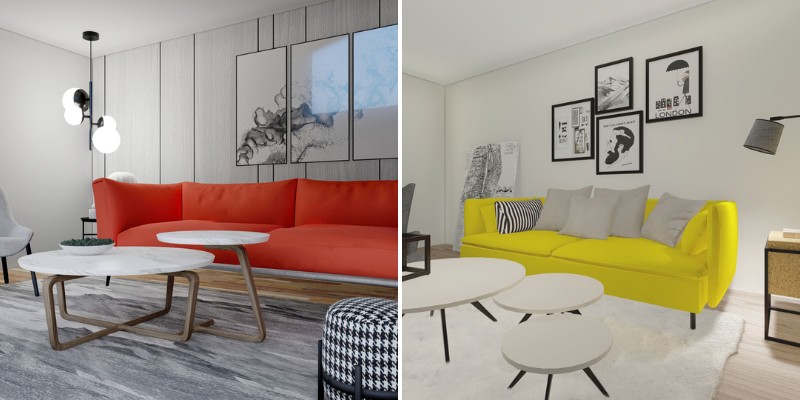
A humble color, white helps any color set against it shine as an object of visual focus, without competing for attention and disrupting the balance of the space.
In such a scenario, the possibilities of colors to be paired with white are varied and endless. With such a diverse range of options available to us, it can be a difficult task to narrow down the options to the best ones.
In service of this need, this article aims to explain how the presence of certain colors and their combinations with white walls can influence the atmosphere of a space.
Each color brings its own distinct characteristics to add to a space, making it either warm or cool, lively or tranquil.
By equipping you with the knowledge of the effect of each color, you can make conscious decisions regarding the final outcome of your design.
Let’s now see some great sofa color options that go well with white walls, illustrated with our custom-made pictures.
1. TAN
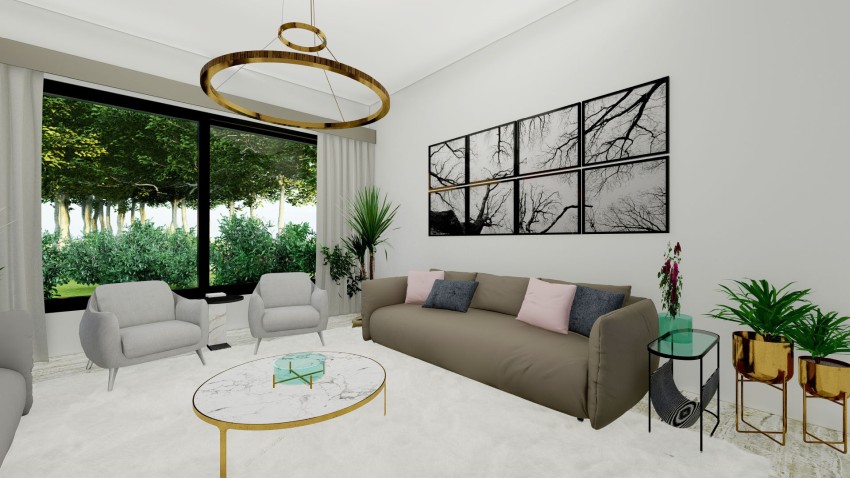
A tan colored sofa adds a touch of warmth to an interior space with white walls while maintaining an otherwise neutral color palette.
According to color psychology, neutral colors contribute to a soothing interior atmosphere. By diminishing the presence of visual stimuli, they reduce strain on the eye and allow it to relax.
A tan color couch, even with its neutral finish, stands out against the plain white walls, as the brownish-beige hue hails from the darker spectrum of neutral tones.
To complement the neutral color scheme of the interior, I recommend sticking to a limited palette. For instance, the sample interior shows how the decor has been limited to a set of monochrome framed photographs, and bronze accents for the furniture and lighting fixtures.
2. POWDER BLUE
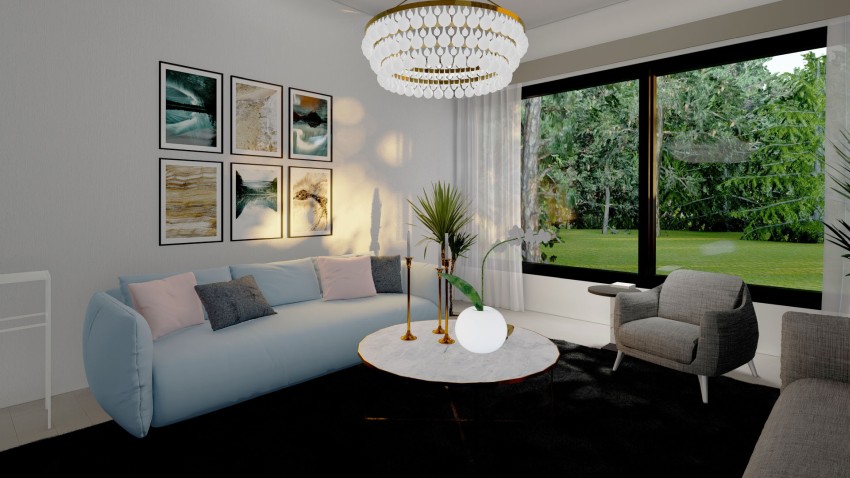
A soft, pastel shade of blue will create a pleasant combination with white walls, as the cooler undertones of the blue provide an uplifting effect to the stark white walls.
According to color psychology, shades of blue, due to their cooler undertones, lend feelings of calmness to a space.
The overall effect is of an interior space that exudes tranquility, and is an ideal space for relaxation.
I recommend adding sheer white curtains to allow natural light to flood the space and give it a brightened, vibrant appearance.
Incorporate cool tones like blues, greens and teals into your room’s decor, to give the impression of a cohesive design scheme.
3. PISTACHIO GREEN
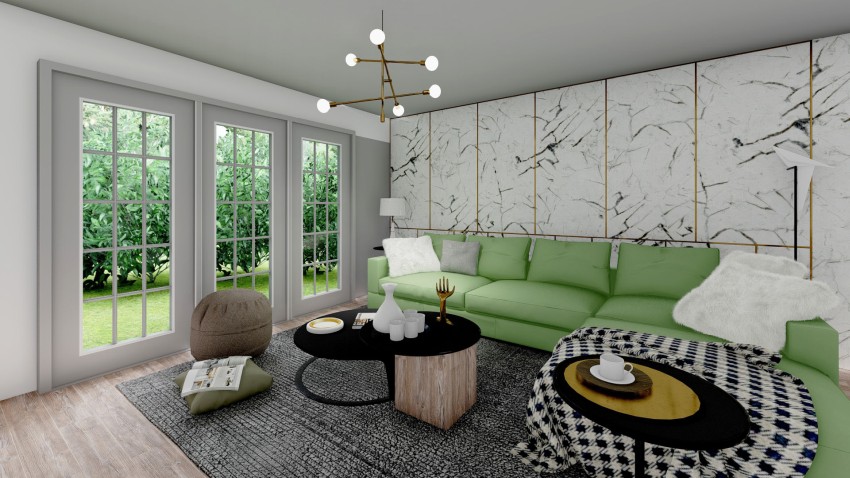
A pistachio green color for your sofa is a great choice when coordinating with a backdrop of white walls.
The tranquil ambience created by the addition of the color green helps to create a space that is relaxing and welcoming, perfect to unwind at the end of the day.
Open up fenestrations in your walls to create views to the outdoors. Here, as in the sample interior, the framed views of the lush green outdoors eliminate the need for excessive wall hung decor.
I recommend keeping the decor restricted to a monochrome palette, with a touch of jute-brown neutrals thrown in. This will allow your green upholstered sofa to truly shine as the star of the space, with all other colors and textures working together to reinforce this hierarchy.
4. GRAY
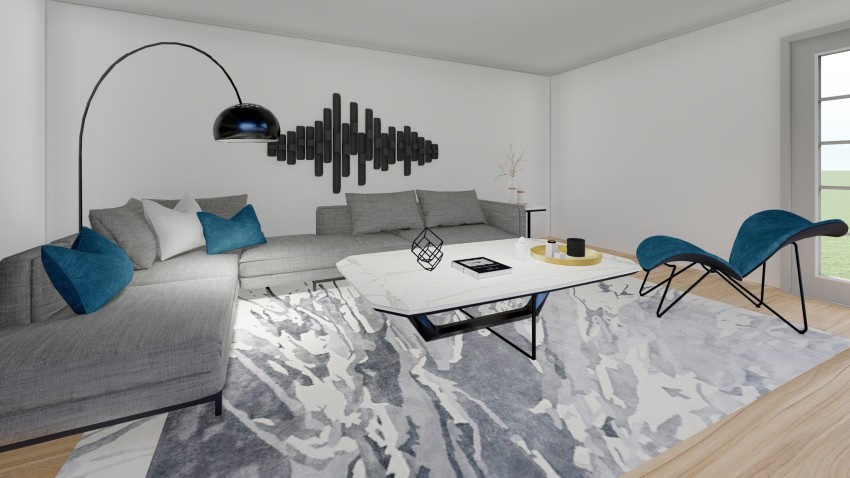
A combination of gray against white results in a modern and minimal color palette that lends class and sophistication to any interior space.
Placed together, gray and white, due to their origin from a monochrome spectrum of black, white, and shades of gray, can result in a space that comes off as dull and bland.
To enliven the space, consider adding a pop of color, in the form of a statement chair, or accent cushions, such as the teal color in the sample interior image shown above.
The accent color will automatically become a point of visual focus, so i recommend using it wisely, spread throughout the space at intervals to create a balanced design scheme.
In keeping with the modern design language dictated by the color palette, i would recommend incorporating furniture and decor that compliments it and aligns with the overarching design language of the space.
5. CORAL
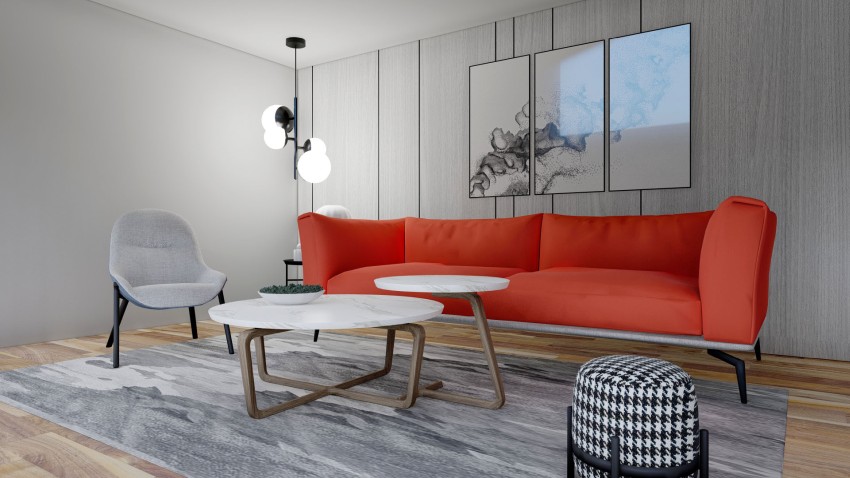
A bright, eye-catching color for a sofa, like coral, will center your chosen piece of furniture as the statement piece in your interior space.
The stark contrast between the bareness of the white walls, and the vibrancy of the coral sofa fabric defines a visual hierarchy that provides the inhabitants eye a centering presence.
To allow the coral color to shine as the star of the space, I recommend choosing secondary furniture and decorative accents that merge with the background instead of competing for the attention of the foreground.
In the sample image, the remaining finishes of the room can be observed to be restricted to a monochrome palette of fabric choices, and a limited set of wooden textures for the furniture and wall finishes.
6. PATTERN
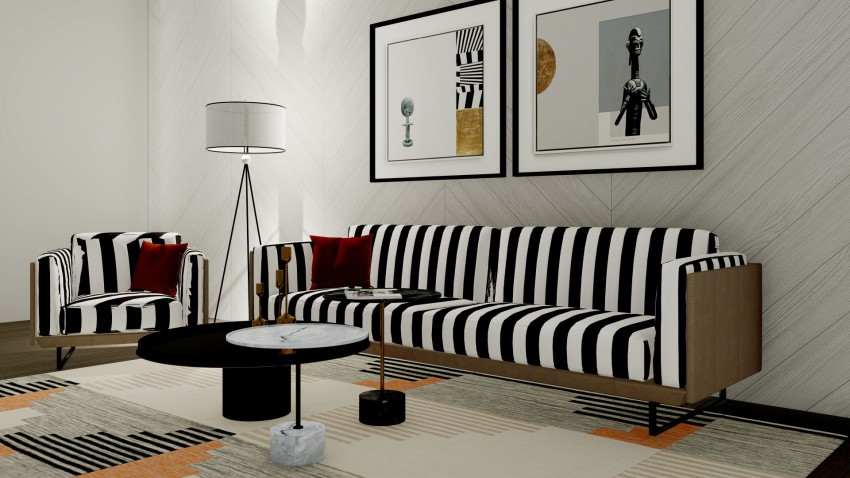
A classic and sophisticated option for sofa fabric is a monochrome pattern of stripes. The bold contrast between the black and white stripes of the pattern helps the upholstered sofa to stand out against the white of the walls.
To prevent the space from appearing too monotonous, consider including pops of color in your decorative accents.
For instance, the sample image shows color incorporated in the form of red accent cushions, a hint of gold in the wall art, and the same mirrored in the pattern of the rug.
I recommend selecting such a pattern for furniture that has a visible wooden structure. The organic texture of the wood will be able to complement the monochrome pattern very nicely.
7. YELLOW
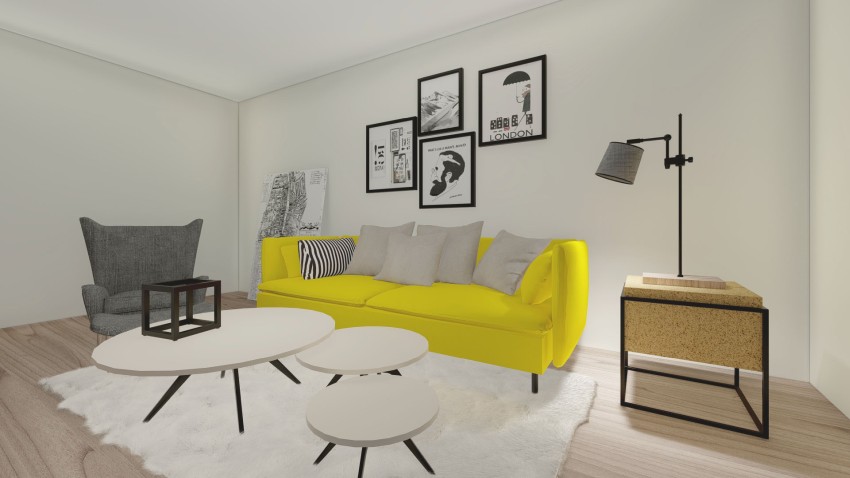
For an interior space with bare white walls, a common source of trepidation is the fear of the space appearing too dull, or too empty, or even too lifeless. The clinical aspect of a set of plain white walls does nothing to diminish this fear.
An easy way to combat this negative association is by incorporating colors and textures that lend life and vitality to a space. A color such as a bright yellow is the epitome of all the vibrancy the color spectrum has to offer.
By its very nature, yellow is a color that denotes energy and liveliness. It uplifts the spirit of the room, and adds a fun and quirky touch of color to an otherwise plain space.
To allow the yellow sofa to stand out as a focal feature, the rest of the furniture can be maintained in an industrial aesthetic, limited to a material palette of black metal frames and wooden finishes.
8. MOSS GREEN
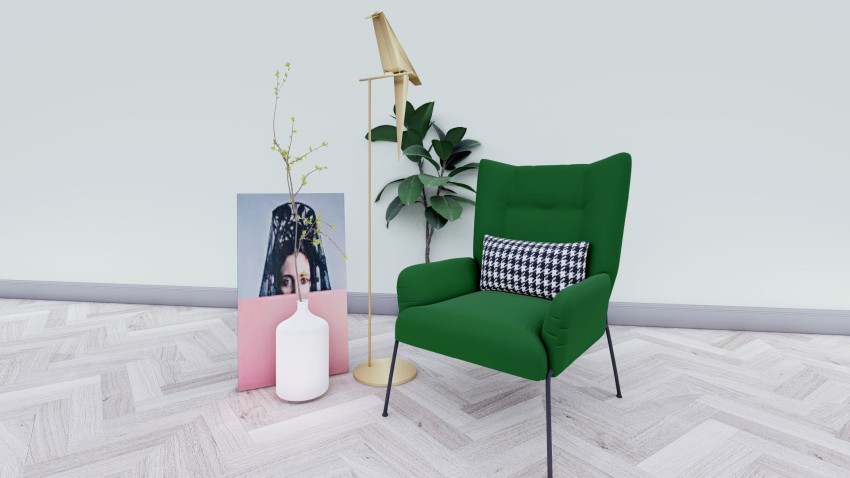
A deep color, like moss green, stands out against the white walls of an interior space and draws visual focus towards itself.
The cool undertones of the green complement the white walls and contribute to a relaxing atmosphere. A leafy green like this, has its roots in the colors and textures found in nature, and this association is what helps it in the curation of a relaxing interior.
It does this by bringing in elements that would otherwise seem divorced from man-made enclosed spaces.
I recommend including a contrasting color, to create a palette of fresh and vibrant colors. A soft pink contrasts with the green of the sofa, and creates a visual balance, preventing the green from appearing too overwhelming.
Additional accents in the form of gold or bronze metallic finishes can also supplement your design scheme.
Related Posts
- How to Protect Sliding Glass Doors from Burglars: Essential Security Tips
- How Long Do Sliding Glass Doors Last? Durability and Lifespan Explained
- Here Are Some Pros and Cons of Textured Walls in Homes
- Why Do Sliding Doors Get Stuck? Common Causes and Solutions
- Comparison of Knockdown Drywall Texture vs Orange Peel
- Some FAQ (Frequently Asked Questions) About Wall Paneling for Homes
Leave a Reply